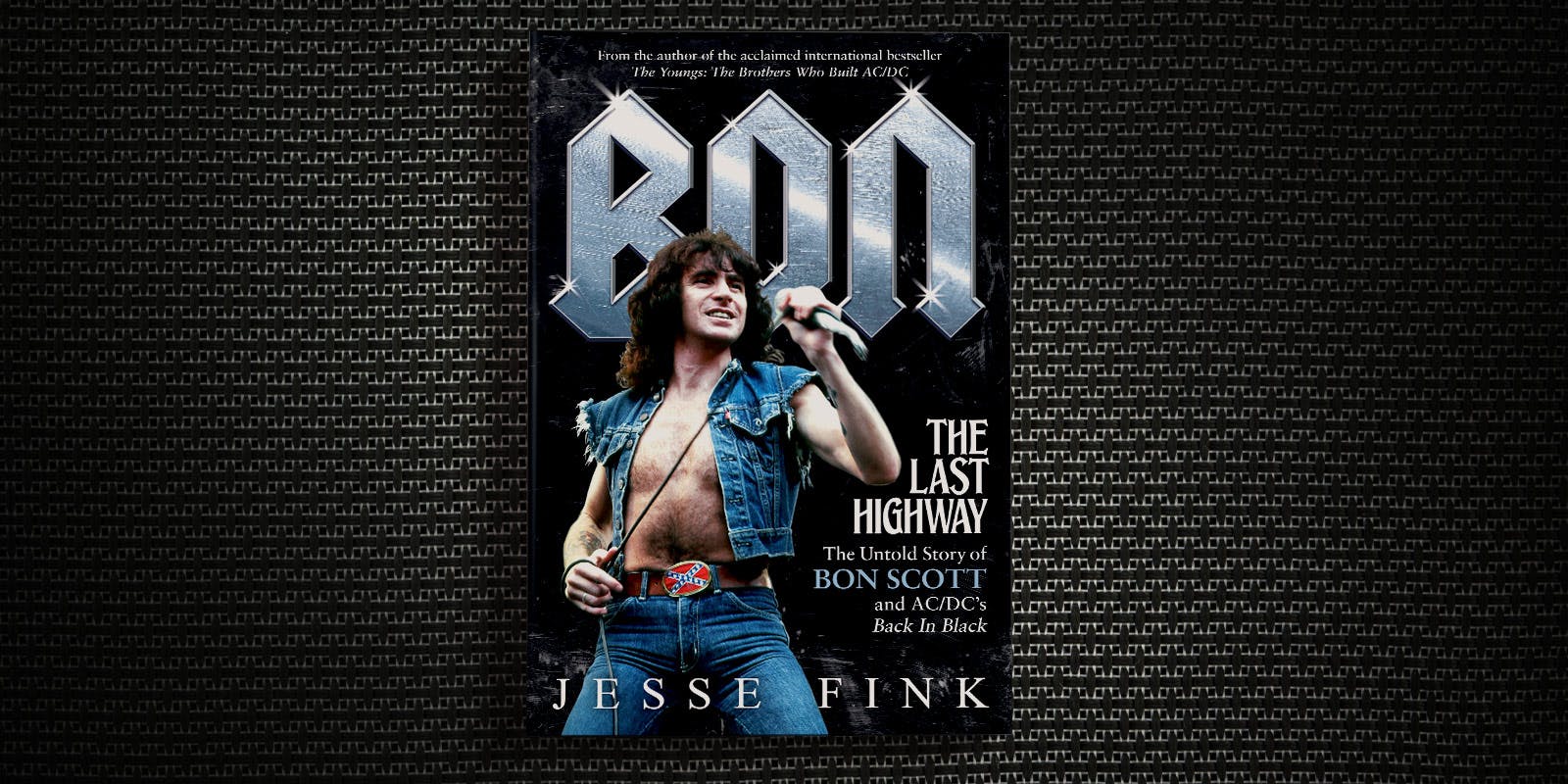How some small-time radio DJs played their part in the AC/DC legend.
Between 1977 and 1980, AC/DC forged their legend as the hardest working band in the music business. It was a period bookended by their first tour of the USA, and singer Bon Scott’s 19 February 1980 death, and it’s an era of the band that has been subject to much scrutiny and conjecture. In Bon: the Last Highway, Jesse Fink finally delivers answers to the nagging questions rock’n’roll fans have been asking for decades, and reveals secrets that will change music history forever. In the passage below, Fink sets the scene for the band’s Texas debut.
1977
Four days before AC/DC arrived in Texas, Barry Manilow had a #1 hit with the dreary ballad ‘Looks Like We Made It’. How this must have irked Bon Scott, who’d only just touched down for the first time in the United States, a place he’d dreamt about since his early teens. Two years later, on Highway To Hell, his final album with AC/DC, he wryly referenced Manilow in the song ‘Get It Hot’ as if it were some kind of blessed relief.
Nobody’s playing Manilow.
There was no escaping disco, either. The hottest track in New York and Los Angeles was ‘I Found Love (Now That I Found You)’ by Love And Kisses. Andy Gibb was about to supplant Manilow for three consecutive weeks with ‘I Just Want To Be Your Everything’. In rock, ‘Barracuda’ by Heart, Ram Jam’s ‘Black Betty’ and Steve Miller Band’s cover of Paul Pena’s ‘Jet Airliner’ were fighting a losing battle against a relentless glitter-ball onslaught.
The challenge facing AC/DC (including their new English bass player, Cliff Williams) was not insignificant; it was the challenge facing any new rock ’n’ roll band in North America. To make money, the name of the game was touring – and Kiss and Led Zeppelin were the unassailable market leaders. The latter had played to 80,000 people at the Pontiac Silverdome in Michigan in April. Zeppelin’s 24 July performance at the Day On The Green in Oakland, California, would be their last North American concert.
But Bon was no Robert Plant in front of tens of thousands of screaming girls in a stadium. He and his band were about to commence what would become a remarkable North American journey in front of 1500 stoned university students and cowboys at an armoury turned hothouse music barn called the Armadillo World Headquarters in Austin.
They were there because a couple of San Antonio disc jockeys, Lou Roney and the late Joe ‘The Godfather’ Anthony, hated Manilow as much as AC/DC did. Their station, KMAC/KISS, was one of the first album-oriented rock (AOR) radio stations in the United States. KMAC/KISS played everything from Ted Nugent, Rush and Bob Dylan to Southern rock, Taj Mahal and BB King. Anthony and Roney would tell local promoters which rock acts to bring to San Antonio and would eventually end up being promoters themselves. One of the acts they suggested to local promoter Jack Orbin was AC/DC.
The Australian band needed the help. Their first North American album, High Voltage, a compilation of tracks from their first two home releases, had tanked, getting significant airplay only on regional stations in Florida and California. In the press, AC/DC was getting panned everywhere from Rolling Stone in New York to Kansas newspaper Lawrence Journal-World, which chose High Voltage as its ‘Worst Album’ of the year: ‘These ugly punk Aussies make Johnny Rotten look like Perry Como.’1 In Texas, though, they didn’t care what the rest of the country thought about AC/DC.
‘In the beginning we never got much attention from the national record companies in the States,’ says Roney. ‘We were just a broken down old funky radio station, so we never got any music from ’em. We started doing imports. Joe or myself would go and buy imports from all over the world. He happened to pick up High Voltage and he brought it in, and we all looked at it and listened to it, and I said, ‘Joe, this music is really a killer, man.’ Of course, nobody had ever heard of AC/DC at that time. Joe did not want to play it too much. But I did. I put it on. And all of a sudden calls started coming in.’
KMAC/KISS ‘started word of mouth’, according to Malcolm Young: ‘When we came to the States in ’77, they told us the timing was wrong for our style of music. It was the time of soul, disco, John Travolta, that type of stuff. There were, I think, five radio stations in the country that were playing rock at the time without the noise and smell about it. When we went down [to the Armadillo] for a soundcheck in the afternoon, there was a bunch of guys in there just sweeping up the building, they were all singing “TNT”, and we thought, “How do those guys know this song?”’
They knew it because Roney, enthusiastically, and Anthony, somewhat begrudgingly, were playing AC/DC’s albums.
1. Not all the press was bad. In 1976, AC/DC got a plug in the Chicago Tribune entertainment column ‘Tower Ticker’: ‘Atlantic Records is high on AC-DC [sic], a punk-rock group from Australia.’ The Washington Post gave the band a reasonable review, praising Angus Young for his ‘great authority’ and noting Bon Scott’s appeal, saying he was ‘hard to ignore, playing the role of the sex-starved madman to such perfection that it’s hard to see how these guys can miss’. The Los Angeles Times astutely picked up on ‘a stunning sense of rock n’ roll humour and heterosexual aggression like we haven’t seen since the early Rolling Stones’. While Billboard wrote, ‘This band is the Australian entry in the heavy metalspunk [sic] sweepstakes. Led by Malcolm and Angus Young on guitars, the band makes up in energy what it lacks in expertise.’ This, however, was about the sum of AC/DC’s positive reviews.














